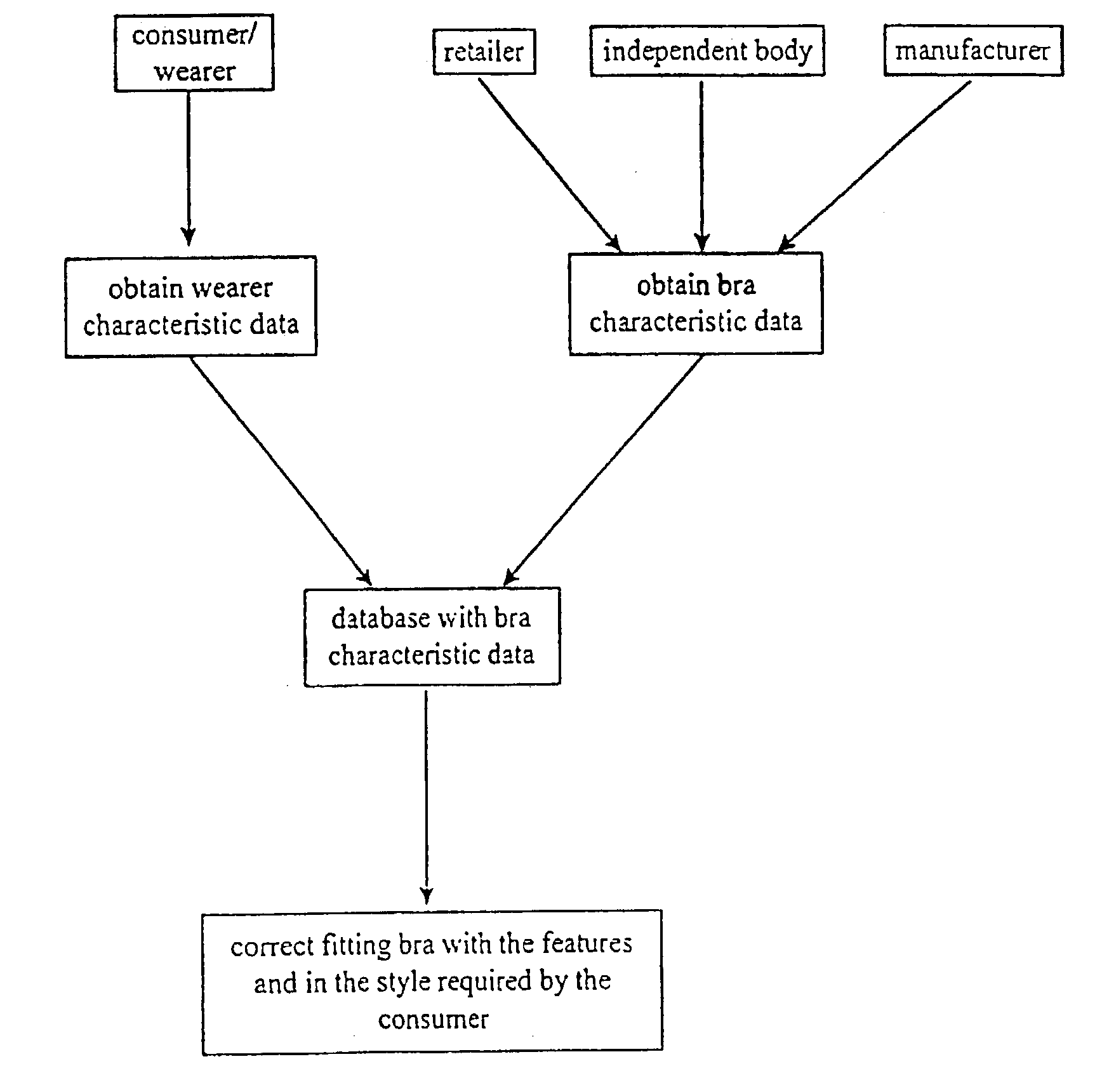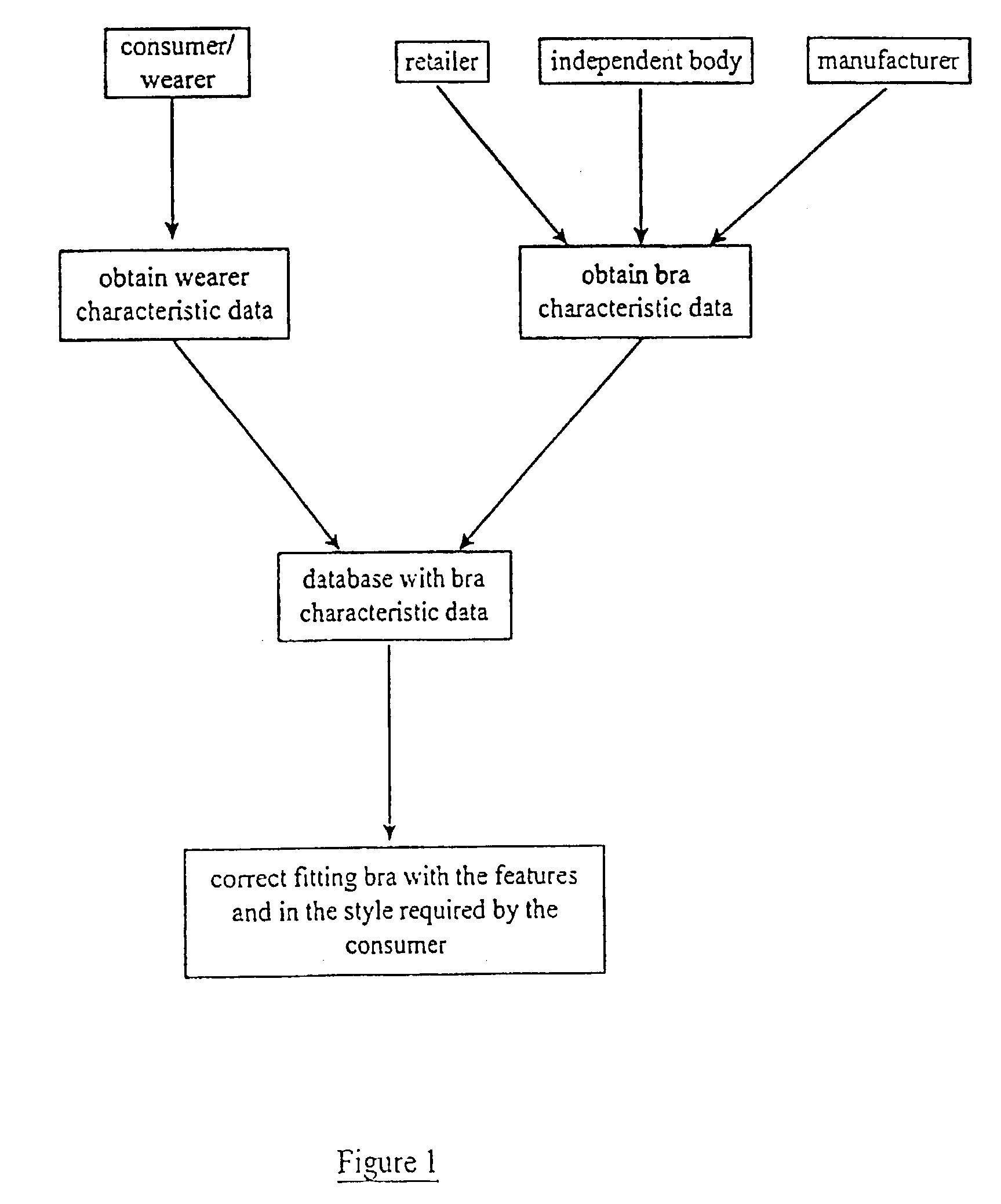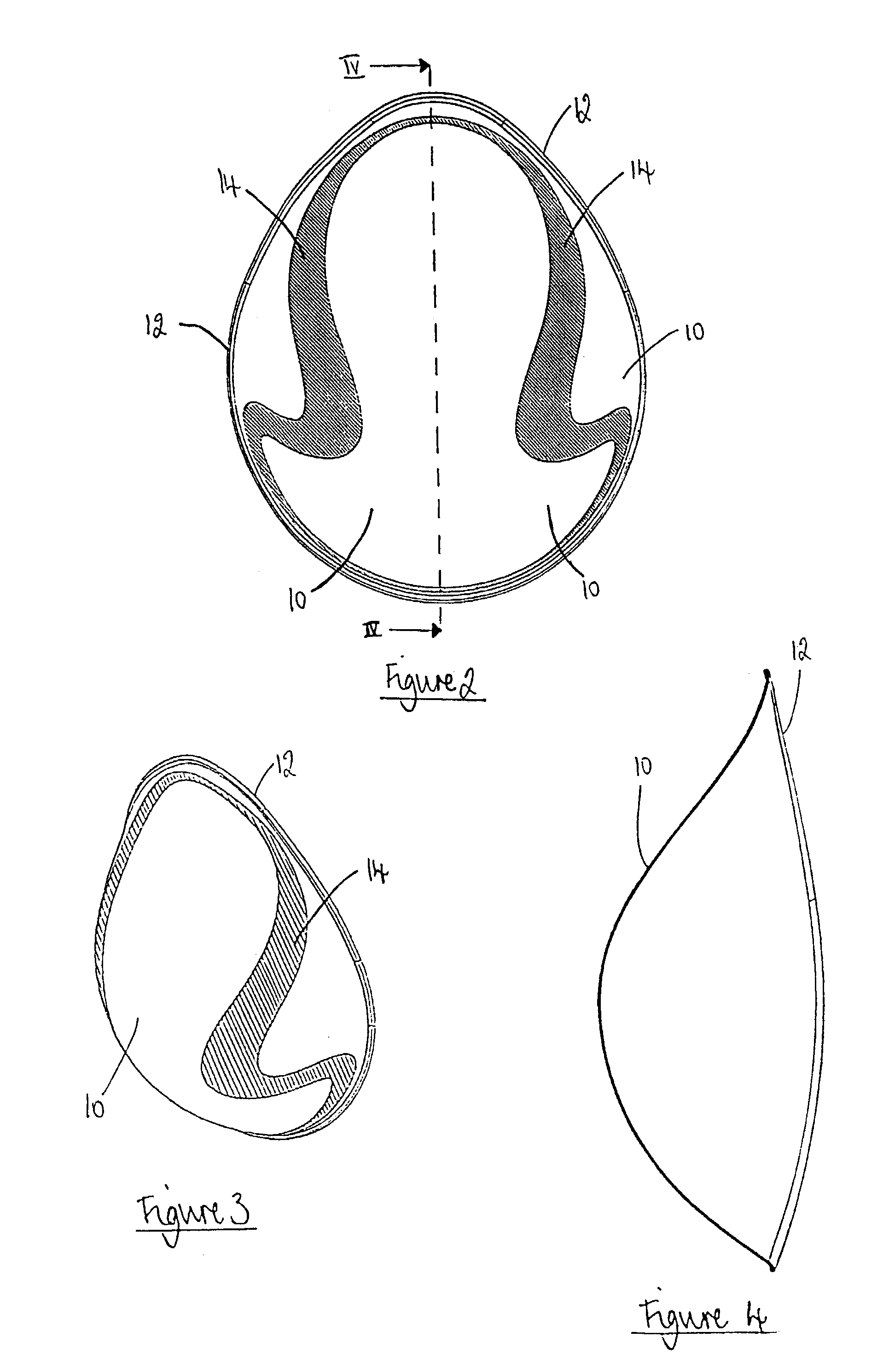Also, substantial and often irreversible changes in breast size and shape can occur during and after
pregnancy.
Both processes take time, are dependent on available stock and do not always result in the purchase of a properly fitting bra.
When choosing bras from mail order catalogues or via
the Internet, the option of trying a bra for fit is much more restricted since, if the bra does not fit, it must be returned to the provider, usually by mail, and another choice made.
If the
consumer is unsure of the size she requires, it could take several attempts and much time and
frustration before an appropriate bra is found.
This process wastes resources, especially for the retailer, who may have to repackage and redistribute the returned items.
The quest to find a correct fitting bra is further compounded by the problem that a lot of women fall in between available standard sizes and that the so-called standard sizes are not uniform between different makes and styles of bras.
However, a 34B in a similar style made by a different maker may provide a different, perhaps less good, fit.
For example, if the measurement is taken with a bra on, there is the
advantage that the breasts are supported but the resulting measurement may be inaccurate if the bra is not an accurate fit to start with.
If the measurement is taken without a bra being worn, the measurement will also be inaccurate since the breasts are unsupported and therefore are of a different shape and volume compared to when they are supported.
As noted above, such
trial and error is all well and good in a store environment if the
consumer has the time and inclination to visit the store, but it does not suit the mail order and
Internet shopping methods that many consumers increasingly prefer.
A further problem with professional measuring services is that many women feel uncomfortable about being measured in a semi-naked state by a stranger.
As a result, the measurement / fitting may be hurried and incorrect advice given.
However, the product of the formula is only as good as the measurements that are put into the formula, and unfortunately those measurements are often inaccurate.
In particular, it is difficult to be sure that a measuring tape is held at an appropriate tension and in the correct position, which is especially difficult to ascertain across the back, either with or without the aid of a mirror.
Also, the cross-nipple or over-bust measurement introduces an inherent inaccuracy because it does not take proper account of the effect of the varying depth and width of the cleavage between the breasts.
The measuring tape bridges the cleavage rather than following the contour, and so cannot accurately tell if a particular apparent breast size is due to the degree of separation and protrusion of the breasts rather than the overall breast size.
A particular source of inaccuracy arises where the bra is designed to flatten the breast or maximise cleavage because such
distortion of the breasts gives a misleading over-bust measurement.
In general, there is a tendency to overestimate
torso size and to underestimate over-bust measurement: as cup size is imputed from the difference between those measurements and with regard to the
torso size, the combination or sum of errors in these critical measurements magnifies errors in apparent cup size.
Consequently, many women wear ill-fitting bras that are uncomfortable and provide insufficient support, which has adverse effects on posture and shape in later years.
The correct fitting of a bra is especially important while breasts are developing during the teenage years and incorrect fitting during this time can lead to complications in later years.
However, since the
sizing of the cups is dictated by the
sizing provided by the harness, this does not provide an accurate measurement of breast size or overcome the problem of non-uniformity between the sizes of different makes and styles of bras.
Therefore, the measurement obtained from the device may only be used to provide a rough estimate of size around which the
consumer should look for an appropriately fitting bra.
It is also apparent that the harness set of GB 2201579 is very complex to manufacture and to use, and would be prohibitively expensive for occasional or one-off use.
Unless the numerical indicia are sufficiently large, it can fairly be assumed that the scale is not readily visible and that it would be difficult to obtain an accurate measurement without much fiddling and possibly the help of a second person.
A major drawback with this device is that the breast is measured in the unsupported shape which, as outlined above, is far from ideal.
Even if a breast is supported during measurement, the way in which the breast is supported can introduce substantial inaccuracies.
The main problem in prior art such as GB 2044470 is that the user has to force her breast into the receptacle to cram the breast into every corner of the receptacle, this being the only way of filling the receptacle to measure breast volume.
Such is the degree of compression necessary to contort the breast into the receptacle that the volume of the breast reduces to an extent that completely undermines its purported
volumetric measurement.
Another problem of prior art such as GB 2044470 is that the edge of the receptacle closest to the user's torso in use is planar.
So, the receptacle does not fit snugly against the curvature of the user's torso around the breast unless it is pressed uncomfortably into the user's
flesh.
Nevertheless, the bra-size
calculator of U.S. Pat. No. 4,454,409 does nothing to facilitate accurate measurement and so suffers the problem of all non-intelligent calculating or computing devices, colloquially referred to as ‘garbage in, garbage out’: a bra-size
calculator provided with the wrong measurements will unerringly produce the wrong bra fitting.
Even if, against all
odds, a user accurately makes all three measurements required by the
calculator, enters those measurements correctly and then uses the calculator properly to produce a nominally correct result, fundamental problems remain.
These are that the measurements themselves are not taken directly from the breast—breast size is merely inferred from other measurements—and there is no guarantee that a nominally matching bra will actually match the measured bra size.
 Login to View More
Login to View More  Login to View More
Login to View More 


